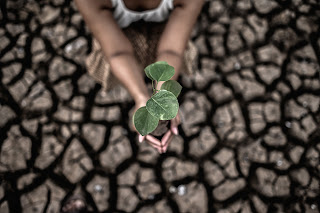Unpacking Climate Change's Impact on Agriculture
As the Earth gets warmer because of climate change, it's causing problems for many crops. The increased heat makes crops like corn, soybeans, and wheat grow faster. But this quick growth usually means they produce less. Research shows that when the temperature goes up by 1 degree Celsius past 30 degrees C, wheat and barley yields decrease by 6%, and corn yields drop by 3%. The hot weather also makes crops lose more water, making them even more stressed.
Heat's Toll on Crops:Certain areas are already feeling the heat's impact. For over 30 years, rising temperatures have slashed corn and soybean yields in the Midwest U.S. Similar declines have affected wheat crops in India and Australia. If the warming trend continues, global food security could be in jeopardy.
Rainfall Changes:
The Impact of climate change on agriculture in india doesn't just make it hotter; it also messes up how much rain falls worldwide. Some places get too much rain or powerful storms, while others suffer from more serious droughts. This makes it tricky for farmers to grow crops reliably. Big rains can hurt crops by breaking their stems and flooding fields. Long periods without rain make fields too dry, making it tough for crops to grow and give good harvests. The unpredictable rain messes up the usual times for growing crops, causing problems for farmers and putting our food supply at risk.
Rising Seas:
The problem is that the sea levels are going up because the ice is melting, and the oceans are getting warmer. This causes trouble because the rising water moves into areas where crops grow near the coast, especially in low-lying places by rivers. Places where they grow a lot of rice, like the Mekong Delta in Vietnam and the Ganges-Brahmaputra Delta in India, are in danger of losing their crops. The salty water from the sea also makes it hard for freshwater and the soil near the coast.
Pests and Diseases:
Global warming makes it easier for bugs and diseases to spread. These creatures, like specific temperatures and climate change, are making more areas just right for them, especially to the north and east. This means new places where we grow crops are at risk from invasive bugs, weeds, and diseases. For instance, warmer winters let soybean rust fungus spread more. The increasing CO2 levels might also make plants weaker against these threats, putting our global food supply in danger.




.jpg)
Comments
Post a Comment